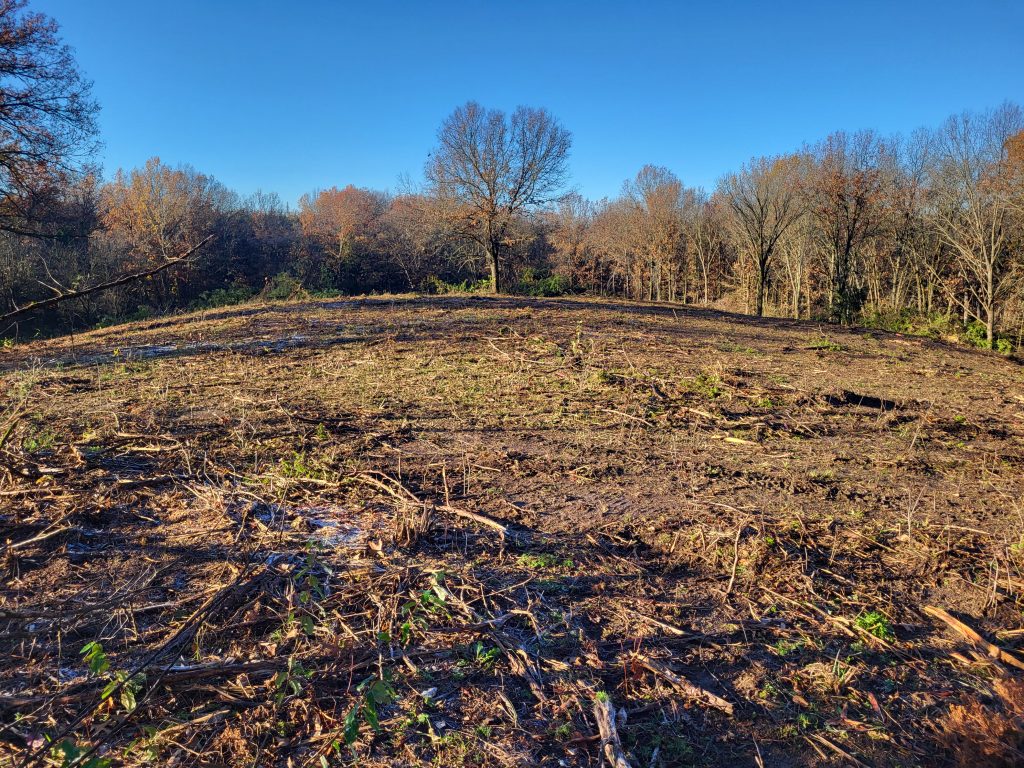NWTF Iowa Funds Prairie Revival
An estimated 80 percent of Iowa was once covered by prairies, the highest percentage in the nation. Today, less than one-tenth of one percent of Iowa’s native prairie remains, existing primarily in small, isolated parcels. These remnants, often overlooked amid expansive row crops and non-native vegetation, represent some of the last traces of Iowa’s natural heritage.
Despite their small footprint, remnant prairies play a large role in supporting Iowa’s landscape. These ecosystems provide critical wildlife habitat, improve soil health by filtering and slowing water runoff and offer native prairie seeds that fuel research and restoration projects across the Hawkeye State.
To help conserve this invaluable resource, the Iowa State Chapter of the National Wild Turkey Federation has awarded a $5,000 Super Fund grant to the Sedan Bottoms Cedar Clearing Project in collaboration with the Iowa Department of Natural Resources. This project focuses on restoring remnant prairies within the Sedan Bottoms Wildlife Management Area in Appanoose County, providing enhanced habitat for wildlife and unrestricted public hunting access.
“The state of Iowa has the dubious honor of being both the most altered landscape as well as one of the most privately owned landscapes in America,” said John Burk, district biologist for Iowa, Illinois and Missouri. “Grassland habitats, in addition to being critically important to a wide array of wildlife species, serve as turkey and pheasant factories. We are excited to witness the predicted wildlife population response as we restore and maintain this larger block of critically important habitat on one of the larger blocks of public land in Iowa.”
Currently dominated by dense stands of Eastern Red Cedars, the targeted area of Sedan Bottoms offers limited ecological benefit. Satellite imagery from the 1970s shows this parcel was once characterized by scattered oaks and open prairie, in stark contrast to its current state. Initial cedar-clearing efforts last winter on a small portion of the area have already revealed promising results. Native prairie species like rough blazing star, common mountain mint, big bluestem, tall coreopsis and partridge pea reemerged in the cleared space, showcasing the potential for ecological revival.


The return of these species demonstrates the land's ability to rebound with proper management. Removing the cedars will positively impact the area, providing benefits such as vital nesting and brood-rearing habitat for wild turkeys and pheasants, as well as habitat for other wildlife species.
The $5,000 grant provided funds for contractors to cut and pile cedar trees on an estimated five-acre plot within the WMA. Combined with $12,000 in REAP (Resource Enhancement and Protection) land management funds for adjacent areas, this effort will restore approximately 45 acres of remnant prairie habitat.

Spanning over 7,400 acres along the Chariton River floodplain, Sedan Bottoms WMA is part of the NWTF's Missouri-Iowa Oaks Focal Landscape and is renowned for its diverse habitats supporting turkey, deer, waterfowl and upland game hunting. The project’s impact extends beyond wildlife, enriching public outdoor recreation opportunities for hunters and conservationists alike for generations to come.
CONNECT WITH US
National Wild Turkey Federation
770 Augusta Road, Edgefield, SC 29824
(800) 843-6983
National Wild Turkey Federation. All rights reserved.
